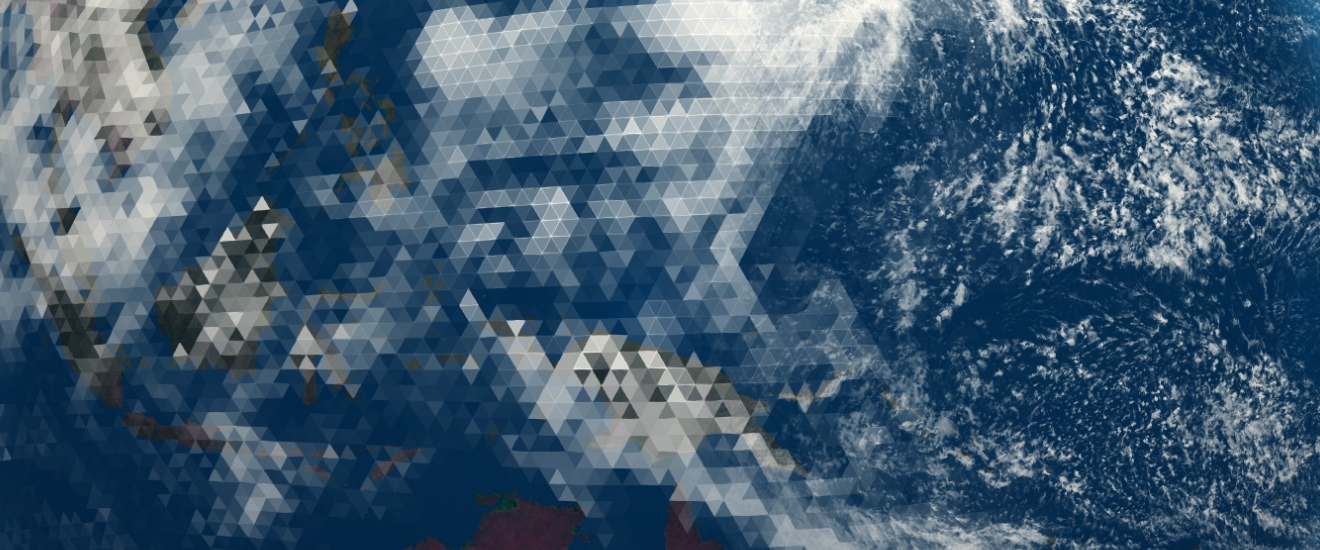nextGEMS: Next Generation Earth Modelling Systems
nextGEMS (next Generation Earth Modelling Systems) is a collaborative European project. Funded by the EU’s Horizon 2020 programme, it taps expertise from fourteen Nations to develop two next generation (storm-resolving) Earth-system Models. Through breakthroughs in simulation realism, these models will allow us to understand and reliably quantify how the climate will change on a global and regional scale, and how the weather, including its extreme events, will look like in the future.
What makes storm-resolving models different?
To study climate, and project climate change, Earth System Models represent processes on land, in the atmosphere, in the oceans and sea-ice by splitting the Earth into a three-dimensional grid and solving the physical equations for each of those millions of cells. Today’s Earth System Models use grids designed to capture the horizontal, but not the vertical, motion fields of atmospheric circulations. This shortcut, while computationally expedient, requires important processes to be neglected, or represented empirically. By using a fifty-fold finer horizontal grid (3 km compared to the 150 km) storm resolving models are able to explicitly represent the circulations that make the storms in the atmosphere, the eddies in the ocean, and cracks in the ice, a leap in realism that is only now becoming possible thanks to advances in super-computing.
Scientific Impact
The much finer grid of nextGEMS’s models allows them to explicitly represent essential climate processes – storms, associated with precipitating deep convection, the effects of the landscape on the atmosphere, the effects of ocean eddies on the ocean heat transport, and its interaction with ice-sheets – that existing climate models now either ignore, or represent empirically. Past research has shown that the physically based approaches nextGEMS exploits are effective in reducing systematic and long-standing errors in conventional climate models, thereby creating a better – more physical – foundation for projections. Because nextGEMS’s storm-resolving models will increase simulation realism on many fronts, they are expected to open new scientific frontiers and shine new light on how the Earth system responds to human activities.
“Aerosol-cloud interactions are still one of the largest uncertainties when it comes to assessing future climates. Conducting these state-of-the-art multi-decadal climate simulations in which aerosol and cloud processes are fully interactive is likely to elevate the science to an entirely new level, one in which we may for the first time truly demonstrate the role of aerosols and clouds in future climates at the fundamental cloud process level. The opportunities for major breakthroughs in our understanding of aerosol and cloud processes afforded by these endeavors are phenomenal.” – Sue van den Heever, Monfort Professor of Atmospheric Science at Colorado State University
Application Impact
nextGEMS storm-resolving models will more realistically represent the climate system for the next 30 years. This includes weather extremes and other components of the Earth system, such as carbon, aerosols and marine nutrients. Importantly, at the same time they will also provide information on scales familiar and relevant to users.
“The European Green Deal initiative Destination Earth will rely on projects like nextGEMS to deliver the next-generation, high-resolution Earth-system models to form the core of its digital twins of Earth. This convergence of Horizon Europe funded, cutting-edge research and Digital Europe funded technology capability provision defines a new step in creating value for society.” – Dr. Peter Bauer, Director of Destination Earth at ECMWF
The multi-decadal simulations produced in nextGEMS will be co-designed and tested with stakeholder communities, such as renewable energy producers, coastal marine ecosystems and fisheries managers. This will increase their added value for societal applications and their ability to serve as platforms for innovation in the provision of earth-system information.
By providing citizens with more realistic, detailed and local information on how the climate and weather, including its severest events, will change, nextGEMS will support the operationalization of the Paris Agreement and the associated ‘Green Transition’. nextGEMS models also serve as prototypes for Digital Twins of the Earth as envisioned by major EU initiatives such as Destination Earth.
“It is great to see Europe’s best modelling centres combining their expertise to tackle a grand challenge of climate science.” – Christian Jakob, Professor for Climate Modelling, Monash University, Australia
To make this ambitious vision become reality we work with 26 partners across Europe and Senegal in a four-year program from 2021 – 2025. The nextGEMS schedule includes two phases, Development and Production, aided with Knowledge Coproduction/Development Hackathons. The latter bring together the nextGEMS community, stakeholders from the renewable energy, marine ecosystems and fisheries sectors, as well as partners from associated projects. Meet our community and follow us on our journey in the nextGEMS Media Library!
More Content
![[Translate to English:] [Translate to English:]](/fileadmin/04_Kommunikation/01_Aktuelles/2025/250513_WCRP_Hackathon/Teaserbild.png)
More than 100 scientists join the Hamburg node of the WCRP Global Km-Scale Hackathon
Researchers from around the globe gather, virtually and physically, for the first World Climate Research Programme (WCRP) Global Km-Scale Hackathon, a…

The influence of volcanic aerosol on climate depends on temperature
Stratospheric sulfate aerosol, as produced by large volcanic eruptions, cools the Earth and has been discussed as a climate engineering method.…



